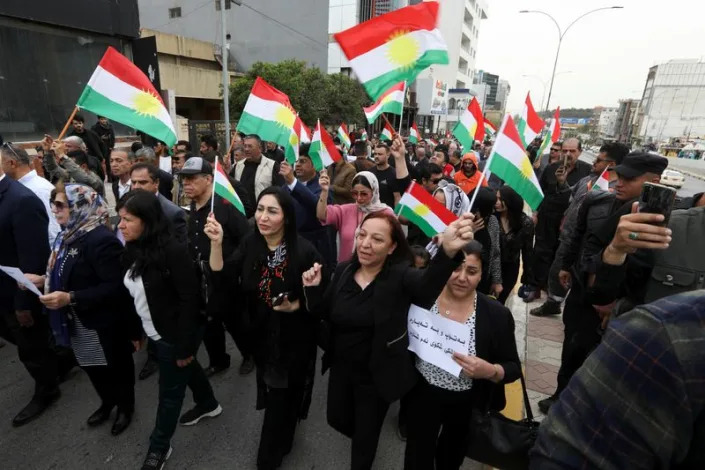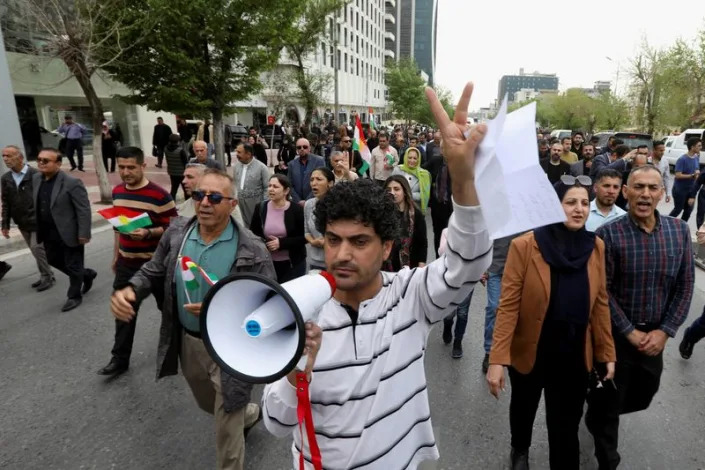There are more than 4,000 banks in the U.S. The argument for having so many can be traced back to arguments as the nation was founded.
Dan Fitzpatrick and David Hollerith
Sat, April 8, 2023
The U.S. has a lot of banks. So many, in fact, that when one fails or runs into trouble, there can be some confusion with other lenders in different parts of the country that share a similar name.
That’s what happened last month when regulators seized New York’s $110 billion Signature Bank. In the days following the third-largest bank failure in U.S. history, executives with three other Signature Banks in Illinois, Ohio and Georgia urged customers not to mix them up with the lender that went down.
"While there are other banks that carry Signature Bank in their names, there is only one Signature Bank of Georgia, and it is in no way associated with any others," stated a press release from Signature Bank (SBGB) in Sandy Springs, Ga. Two other Signature Banks based in Rosemont, Ill. and Toledo, OH also reminded clients they were not affiliated with New York’s Signature in any way.
There are currently more than 4,100 commercial banks in the U.S., according to the FDIC. That is a lot fewer than there used to be (more than 14,000 existed in the 1930s and 1980s), but it is still more than many other parts of the world. The number of banks in Canada was 81 as of 2021, according to the IMF, while Japan had 112, China had 187, Germany had 251, and the U.K. had 311.
Most U.S. banks are community and regional lenders that are considerably smaller than giants like JPMorgan Chase (JPM), Bank of America (BAC), or Citigroup (C).
Despite their stature, these smaller players collectively shoulder a lot of the borrowing that happens across the country. More than 80% of all commercial real estate loans are now held by banks with fewer than $250 billion in assets, according to a report by Goldman Sachs economists Manuel Abecasis and David Mericle.
The banking crisis that roiled the country in March introduced Americans to a number of these lesser-known names: Silicon Valley Bank (SIVB). Signature Bank (SBNY). Silvergate Bank (SI). First Republic (FRC). Zions (ZION). PacWest (PACW). Western Alliance (WAL).
The panic triggered by their challenges served as a reminder that many smaller institutions in the U.S. can create pockets of vulnerability that have the potential for systemic risk.
Jefferson vs. Hamilton
Why do we have so many banks? It starts in the early years of the newly-created United States with an argument between Thomas Jefferson, the first U.S. Secretary of State, and Alexander Hamilton, the first Treasury Secretary.
Hamilton wanted one dominant national bank, and Jefferson feared the influence of a juggernaut would put state-based banks out of business. George Washington sided with Hamilton and so the country got its first national bank in 1791 followed by a second national bank in 1816.
But both of those banks lost their charters due to Jeffersonian-type opposition, letting state banks proliferate for decades without national competition.
President Lincoln brought back national banks during the Civil War, and the U.S. banking system settled into a structure that was partly centralized (Hamilton) and partly decentralized (Jefferson). Laws limited how big individual banks could become, protecting the many lenders that operated within hyper-local boundaries.
"There was traditionally in the U.S. — and we still have an aspect of this today — a kind of populist concern about big banks, especially big-city banks," said Fordham University School of Law Professor Richard Squire.
The number of banks multiplied as the country expanded, reaching more than 10,000 in 1900 and peaking at more than 30,000 in 1921, according to figures compiled by the Federal Reserve Bank of St. Louis. The Great Depression wiped out many of them, but the U.S. still had more than 13,000 in the mid 1930s and stayed close to that level until the late 1980s and 1990s, when a series of banking crises, industry consolidation, and deregulation yanked the numbers down again.
One key protection for local lenders fell in the last decades of the 20th century when some states and then Congress allowed bigger banks to acquire rivals across state lines, a move that had been strictly prohibited for decades.
That, and the chaos of the 2008 financial crisis, paved the way for the establishment of a handful of coast-to-coast giants that dominate the business today. The number of U.S. banks has now dropped by more than 40% since 2008.
Too small to survive?
Some argue that many of the small and regional banks that still exist will eventually get swallowed up or go out of business as the giants continue to exert their power.
And that the regional banking crisis that rocked the industry in March could provide new momentum as smaller banks struggle to adapt to a period of higher interest rates without as many options as their larger "too-big-to-fail" rivals.
The number of banks is "going to keep going down," said Squire, the Fordham professor, "because too big to fail is a real phenomenon."
That new vulnerability could have larger consequences for the economy if local bankers decide to pull back on new lending, said Tomasz Piskorksi, a finance and real estate professor at Columbia Business School. And lending at smaller banks did in fact drop by $74 billion in the two weeks ending March 29, according to new Fed data.
"Banks don’t even have to fail," he said. "They just have to be unwilling to lend."
One regional bank, First Republic in San Francisco, got some support last month from some industry giants. Eleven institutions, including JPMorgan Chase and Bank of America, provided more than $30 billion in uninsured deposits with the hope that it would tamp down any concerns among First Republic’s customers.
But that also created problems for another regional lender on the other side of the country with a similar name. Some investors confused First Republic with Philadelphia-based Republic Bank, which watched as its stock fell as much as 28% on the same day First Republic received its $30 billion rescue.
To make things even more confusing, Republic Bank once called itself First Republic in the 1990s before changing its name. Its ticker is FRBK while First Republic uses FRC.
The confusion pushed Republic First CEO Thomas Geisel to say the perhaps not-so-obvious in a letter on his company's web site — "We are NOT First Republic Bank."


















